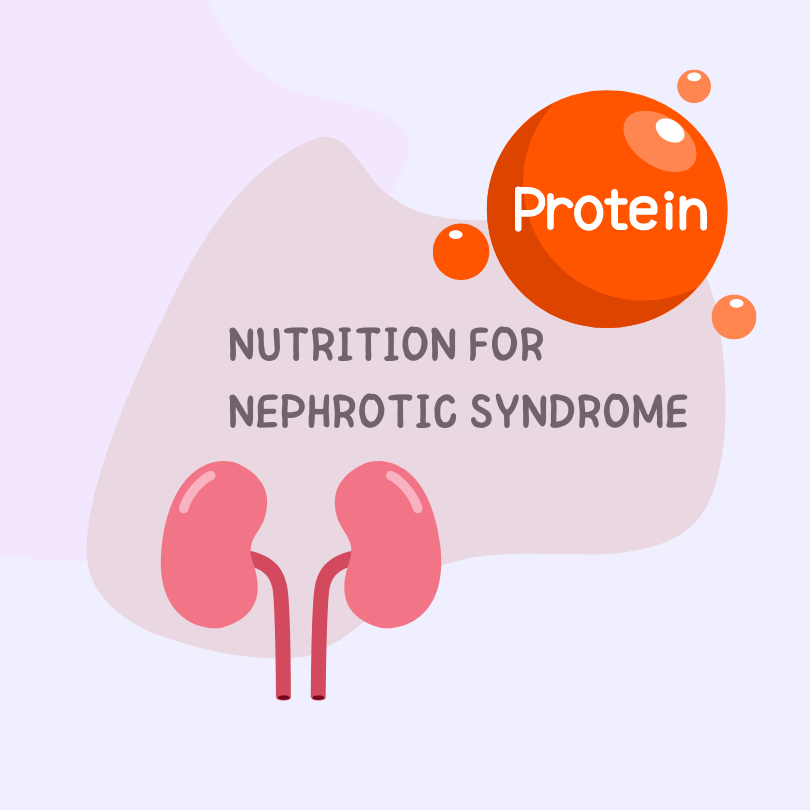Today’s post is a summary of Chapter 28 in the 4th Edition of Nutritional Management of Kidney Disease, published in 2022.
What is nephrotic syndrome?
Nephrotic syndrome occurs when there is lots of protein spilling in the urine. Most of the spilled protein is albumin, though other proteins are lost as well. These include:
- Immunoglobulins
- Transferrin (the iron binding protein)
- Ceruloplasmin (the copper binding protein)
- Binding proteins for Vitamin D
What are the main signs and symptoms of nephrotic syndrome?
Nephrotic syndrome is characterized by edema, hyperlipidemia and hypoalbuminemia.
Why does edema occur in nephrotic syndrome?
The two main causes of edema in nephrotic syndrome are:
- Changes in plasma protein levels which leads to changes in the oncotic pressure in the plasma.
- Reduced urinary sodium excretion in the kidneys (related to changes in the oncotic pressure within the kidneys)
Why does hyperlipidemia occur in nephrotic syndrome?
Due to changes in the oncotic pressure (related to protein losses) the liver produces more apo-A-I and B. Apo A-I and B, are apolipoproteins that are in the part of the blood lipids. There is also reduced triglyceride clearance.
Why does hypoalbuminemia occur in nephrotic syndrome?
Hypoalbuminemia occurs due to urinary protein losses. Albumin synthesis rates can be twice as high as normal in nephrotic syndrome, but these rates can fail to keep up with the losses. For example:
- Normal albumin synthesis rate is 10-14g/day
- Normal albumin losses in Nephrotic syndrome is 5g/day
What happens to albumin and proteinuria when protein intake increases?
Studies have found that higher protein intake, using dietary protein supplements led to higher urinary albumin excretion. At the same time, serum albumin levels decreased.
Why is muscle wasting associated with nephrotic syndrome?
Despite increases in albumin protein synthesis, nephrotic syndrome is not associated with increases in total-body protein synthesis. This means that other protein synthesis is slowed down when the body tries to make more albumin to compensate for the losses. In this way, skeletal muscle synthesis is decreased and muscle wasting is common.
Are high protein diets recommended for nephrotic syndrome?
No. High dietary protein intakes as associated with more damage to the glomerular capillaries and results in higher urine protein losses.
Why would high protein diets increase urine protein losses?
Two possible mechanisms have been proposed to explain this phenomenon:
- Increased protein intake increases pressure in the capillaries of the glomerulus, which increases protein passage through the capillary walls
- Increased protein intake may also change the glomerular basement pore size and make them bigger, which allows bigger proteins to pass through more easily
Are all amino acids equally bad?
Studies are currently underway to explore if different amino acids may be better in nephrotic syndrome. To date, studies on Branched Chain Amino Acids failed to show benefit. However, experimental studies have suggested that soy proteins may be better. There are also active trial looking at dairy-free and gluten-free protein sources in children with nephrotic syndrome.
Why are dairy-free and gluten-free protein source being studied?
For select causes of nephrotic syndrome, investigations are ongoing to explore if the syndrome may actually be an allergy.
For patients (mostly in children) who develop nephrotic syndrome due to minimal change disease, there is evidence that links cow’s milk protein to this process. This is being investigated as potential allergic-type reaction.
Investigations into gluten-free proteins stem from an association between gluten enteropathy and IgA deposits in o the glomeruli.
At this point, evidence does not suggest that routine restriction of dairy or gluten is indicated for all cases of nephrotic syndrome.
What nutrition deficiencies can occur in nephrotic syndrome?
Because albumin is the primary carrier protein for many minerals, losses of albumin can increase the losses of divalent (+2) cations, including:
- Calcium
- Zinc
- Selenium
- Iron
- Boron
- Copper
There is also potential losses of other vitamins and minerals.
What treatments are recommended for micronutrient deficiencies?
The primary treatment target is reduced urinary protein losses. Reducing urinary protein losses reduces losses of the divalent cations.
However, studies have found that administration of Vitamin D can help correct both calcium and Vitamin D levels.
What are the key nutrition interventions?
Consider that the primary treatment target for nephrotic syndrome is reduction of the proteinuria, which is mostly done with medications. This will improve all of the resulting disease processes.
However, given the that the three main signs and symptoms may have a nutrition process, here are the key messages:
- Hypoalbuminemia: Aim for 0.8g protein/kg/day. High protein diets do not prevent muscle wasting and have been associated with increased proteinuria.
- Edema: Dietary sodium restriction is recommended to help with edema
- Hyerlipidemia: There is no clear evidence that low fat diets will improve hyperlipidemia in nephrotic syndrome, however moderation of saturated fat intake inline with healthy diet guidelines appears prudent. There is no evidence to support Omega-3 supplementation in this population.
Take Aways
When you see nephrotic syndrome written in the chart, this means your patient has LOTS of protein in their urine. This can lead to muscle wasting, hypoalbuminemia, hypocalcemia and hyperlipidemia.
While the natural thought might be to increase the protein to replace the losses, evidence does not suggest that this helps and in that in fact this may be harmful. Aim for moderate protein intake (approximately 0.8g/kg).
To help with edema, try to reduce dietary sodium intake. You may find this sodium calculator helpful for counseling patients on how to do that.
Finally, traditional diets to lower cholesterol may not be effective in this syndrome as the primary driver of high cholesterol levels is different than traditional causes. That being said, aiming for a healthy balance of fat in the diet appears prudent.


